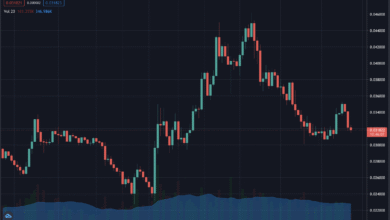
Ethereum has captured the attention of both retail investors and institutional players who recognize its fundamental value proposition. The current market dynamics suggest that ETH could be positioning itself for a significant price breakthrough, with technical analysts and on-chain data pointing toward a potential rally to the $4,300 price target.
The growing interest from whale investors and corporate treasuries has created a compelling narrative around Ethereum’s long-term prospects. Unlike previous bull cycles driven primarily by retail enthusiasm, the current accumulation phase demonstrates a mature market where sophisticated investors are strategically building positions. This institutional-grade adoption represents a fundamental shift in how Ethereum is perceived within traditional finance circles, transforming from a speculative asset into a legitimate component of diversified investment portfolios.
Understanding the forces behind this potential price movement requires examining multiple factors that influence Ethereum’s price action. From whale accumulation patterns to corporate treasury strategies, from network upgrades to decentralized finance growth, each element contributes to the broader bullish thesis. The convergence of these factors has created what many analysts consider an optimal environment for sustained price appreciation, potentially propelling Ethereum toward new all-time highs in the coming months.
The Growing Influence of Ethereum Whales in Market Dynamics
Whale activity has become increasingly significant in determining short-term and long-term price movements within the cryptocurrency ecosystem. These large holders, defined as addresses containing substantial amounts of ETH tokens, possess the financial capability to influence market sentiment and liquidity conditions. Recent on-chain analytics reveal that whale addresses have been consistently accumulating Ethereum throughout recent price consolidations, suggesting strong conviction among the most informed market participants.
The behavioral patterns of these large holders provide valuable insights into market psychology and future price potential. When whales accumulate during periods of uncertainty or minor corrections, it typically signals confidence in the asset’s fundamental strength and future appreciation potential. Data from blockchain analytics platforms shows that addresses holding between 10,000 and 100,000 ETH have increased their combined holdings by significant percentages over recent quarters, demonstrating sustained institutional interest despite short-term market volatility.
This accumulation trend becomes particularly noteworthy when examined alongside exchange outflows. Whales have been systematically withdrawing Ethereum from centralized exchanges and moving these assets into cold storage solutions or decentralized finance protocols. Such movements reduce available supply on exchanges, creating potential supply shocks when demand increases. The combination of reduced exchange reserves and increased whale holdings establishes favorable conditions for price discovery at higher levels, particularly as the market enters phases of increased buying pressure.
Furthermore, whale transactions often serve as leading indicators for broader market movements. Historical analysis demonstrates that periods of intense whale accumulation frequently precede significant price rallies, as these sophisticated investors typically possess superior market intelligence and longer investment horizons. The current accumulation phase mirrors patterns observed before previous bull runs, strengthening the case for potential upward momentum toward the $4,300 threshold and beyond.
Corporate Treasuries Embrace Ethereum as a Strategic Reserve Asset
The integration of cryptocurrency into corporate balance sheets represents one of the most significant developments in digital asset adoption. While Bitcoin initially dominated corporate treasury strategies, Ethereum has emerged as an increasingly attractive option for forward-thinking companies seeking diversification and technological alignment. This shift reflects growing recognition of Ethereum’s unique value propositions, including its smart contract functionality, decentralized application ecosystem, and ongoing network improvements that enhance scalability and efficiency.
Several publicly traded companies have announced strategic allocations to Ethereum, viewing the asset as both a store of value and a gateway to blockchain technology implementation. These corporate treasury purchases differ fundamentally from speculative trading, as companies typically adopt long-term holding strategies aligned with their broader business objectives. The announcement of each major corporate acquisition tends to generate positive market sentiment, validating Ethereum’s legitimacy as an institutional-grade asset and potentially inspiring additional companies to explore similar strategies.
The motivations behind corporate Ethereum adoption extend beyond simple price appreciation expectations. Many companies recognize the strategic advantages of holding the native asset of the world’s leading smart contract platform. This positioning enables potential future participation in decentralized finance protocols, non-fungible token marketplaces, and emerging Web3 applications. By establishing Ethereum treasury positions, companies demonstrate technological sophistication and position themselves to capitalize on the ongoing digital transformation across multiple industries.
Corporate adoption also contributes to reduced circulating supply, as treasury holdings typically remain locked for extended periods. Unlike retail investors who might sell during volatility, corporations generally maintain their positions through market cycles, providing a stabilizing floor for Ethereum’s price. As more companies follow this trend, the cumulative effect on available supply could create structural support for higher price levels, making the $4,300 target increasingly achievable as institutional demand continues expanding.
Technical Analysis Points Toward Bullish Price Breakout
From a technical perspective, Ethereum has been forming constructive chart patterns that suggest potential upward momentum. The asset has established strong support levels that have held through multiple retests, demonstrating buying interest at these price zones. Technical analysts point to ascending triangle formations and higher lows on multiple timeframes as evidence that ETH price action is coiling for a significant breakout that could propel prices toward the $4,300 resistance level.
Key technical indicators provide additional confirmation of bullish momentum building within Ethereum markets. Moving average convergences, relative strength index readings, and volume profiles all suggest that the asset is transitioning from consolidation into expansion phases. The alignment of these technical factors across daily, weekly, and monthly timeframes strengthens the probability of sustained upward movement rather than temporary spikes followed by reversals.
Fibonacci retracement levels derived from previous price movements identify $4,300 as a logical extension target based on historical price behavior. This technical price target aligns remarkably well with fundamental drivers, creating a confluence of factors that support the bullish thesis. When technical projections correspond with fundamental catalysts such as whale accumulation and corporate adoption, the likelihood of achieving these targets increases substantially.
Trading volume patterns further reinforce the technical case for upward movement. Periods of consolidation with declining volume followed by breakout attempts with increasing volume represent classic accumulation-to-distribution transitions. Current volume trends suggest that Ethereum markets are approaching such an inflection point, where accumulated positions begin transitioning into active buying that drives price discovery at higher levels. This technical setup, combined with a favorable market structure, positions Ethereum advantageously for potential breakout scenarios.
Network Fundamentals Strengthen Ethereum’s Long-Term Value Proposition
Beyond price speculation and trading dynamics, Ethereum’s fundamental network metrics continue demonstrating robust growth and adoption. The number of active addresses, daily transactions, and smart contract deployments all trend positively, indicating genuine utility and expanding use cases. These fundamental metrics provide substance behind price movements, differentiating Ethereum from assets driven purely by speculation without underlying utility or adoption.
The Ethereum network has successfully implemented multiple upgrades aimed at improving scalability, security, and sustainability. The transition to proof-of-stake consensus through the Merge represented a watershed moment that dramatically reduced energy consumption while maintaining network security. Subsequent upgrades have continued enhancing network capabilities, with improvements in transaction throughput and cost efficiency making Ethereum more accessible for mainstream applications.
Decentralized finance protocols built on Ethereum continue attracting significant value, with billions of dollars locked in various applications ranging from lending platforms to decentralized exchanges. This thriving DeFi ecosystem creates continuous demand for ETH as users require the asset for transaction fees and protocol participation. The growth of DeFi represents a fundamental use case that generates organic demand independent of speculative trading, providing structural support for Ethereum’s valuation.
Additionally, the expanding universe of layer-two scaling solutions amplifies Ethereum’s capabilities without compromising its security guarantees. These solutions enable high-throughput applications while settling final transactions on the Ethereum mainnet, creating a symbiotic relationship that drives demand for the base layer asset. As layer-two adoption accelerates, the increased activity ultimately translates into greater value accrual for ETH holders, strengthening the fundamental case for appreciation toward targets like $4,300.
Also More: Ethereum’s Terrible Market Crash 4 Smart Recovery Tactics
Institutional Infrastructure Development Facilitates Broader Adoption
The maturation of cryptocurrency infrastructure has played a crucial role in enabling institutional participation in Ethereum markets. Regulated custody solutions, sophisticated trading platforms, and compliant on-ramp services have addressed many concerns that previously prevented traditional financial institutions from allocating to digital assets. This infrastructure development has effectively removed barriers that limited institutional investment in earlier market cycles.
Major financial institutions have launched Ethereum-related products and services, including futures contracts, options, and investment vehicles that provide regulated exposure to ETH price movements. These products enable traditional investors to gain cryptocurrency exposure without directly holding digital assets, expanding the potential investor base significantly. The availability of regulated investment vehicles has been particularly important for pension funds, endowments, and other institutional investors operating under strict compliance requirements.
Custody technology has advanced considerably, with multiple providers offering institutional-grade security solutions that address concerns about digital asset storage. These custodians employ sophisticated security protocols , including multi-signature requirements, cold storage systems, and comprehensive insurance coverage. The availability of trusted custody solutions has been instrumental in convincing risk-averse institutions to consider Ethereum allocations as viable components of diversified portfolios.
Furthermore, the integration of Ethereum into traditional financial systems continues to progress through partnerships between blockchain companies and established financial institutions. These collaborations facilitate seamless interaction between legacy financial infrastructure and blockchain networks, enabling efficient capital flows and reducing friction in the investment process. As this integration deepens, the path toward broader institutional adoption becomes increasingly clear, supporting the thesis that corporate treasuries and large investors will continue expanding their Ethereum holdings.
Macroeconomic Conditions Support Alternative Asset Allocation
The broader macroeconomic environment has created conditions favorable for alternative asset classes, including cryptocurrencies. Concerns about monetary policy, inflation dynamics, and currency devaluation have prompted investors to seek assets outside traditional financial systems. Ethereum’s characteristics as a decentralized, programmable, and scarce digital asset position it as an attractive option for diversification-focused investors navigating uncertain economic conditions.
Global liquidity conditions significantly influence cryptocurrency markets, with periods of monetary expansion typically correlating with increased risk asset appreciation. Central bank policies and fiscal stimulus measures create excess liquidity that often flows into alternative investments, including digital assets. As macroeconomic uncertainty persists, investors increasingly view Ethereum and other cryptocurrencies as potential hedges against systemic financial risks and currency depreciation.
The correlation between traditional markets and cryptocurrency markets has evolved, with digital assets occasionally demonstrating independence from stock market movements. This potential for decorrelation enhances Ethereum’s appeal as a portfolio diversification tool, particularly for sophisticated investors seeking uncorrelated returns. As evidence of this decorrelation accumulates, institutional allocators may increase their willingness to dedicate portions of their portfolios to digital assets like Ethereum.
Additionally, generational wealth transfer and changing investor demographics favor cryptocurrency adoption. Younger investors demonstrate greater comfort with digital technologies and show increased willingness to allocate to cryptocurrency assets. As this demographic cohort accumulates wealth and assumes decision-making roles within investment institutions, the natural progression toward greater cryptocurrency adoption seems inevitable, providing long-term structural support for assets like Ethereum.
Regulatory Clarity Emerges as a Positive Catalyst: Ethereum Eyes $4,300
Regulatory developments have historically created significant volatility within cryptocurrency markets, but recent trends suggest movement toward clearer frameworks that could benefit established assets like Ethereum. Regulatory clarity reduces uncertainty that has previously deterred institutional investment, potentially unlocking significant capital flows as compliance concerns diminish. The evolution toward comprehensive yet reasonable regulatory frameworks represents a crucial milestone in cryptocurrency maturation.
Various jurisdictions have begun establishing clear guidelines for cryptocurrency classification, taxation, and trading. These frameworks provide the legal certainty that institutions require before making substantial allocations to digital assets. As regulatory environments stabilize, the perceived risk associated with Ethereum investment decreases, making the asset more attractive to conservative investors who previously avoided the space due to regulatory ambiguity.
The distinction between different types of digital assets has become increasingly important in regulatory discussions. Ethereum’s characteristics and the nature of its network operations place it in a unique position within these classification debates. Clear regulatory treatment that recognizes Ethereum’s utility and decentralized nature would represent a significant positive catalyst, potentially accelerating institutional adoption and supporting higher price levels.
Compliance-focused cryptocurrency businesses have invested heavily in meeting regulatory requirements, creating a more mature and sustainable industry ecosystem. This professionalization enhances the credibility of the entire sector and facilitates integration with traditional finance. As the regulatory landscape continues evolving in constructive directions, Ethereum stands to benefit from increased institutional confidence and reduced legal uncertainty that has previously constrained capital allocation.
The Road to $4,300: Confluence of Multiple Bullish Factors
The potential move toward $4,300 represents more than a simple price prediction based on isolated factors. Instead, this target emerges from the confluence of multiple reinforcing trends, including whale accumulation, corporate treasury adoption, technical setup, fundamental network growth, infrastructure development, favorable macroeconomic conditions, and improving regulatory clarity. When these diverse elements align, they create powerful momentum that can drive sustained price appreciation.
Historical analysis of previous Ethereum bull cycles reveals that major price movements typically occur when multiple catalysts converge simultaneously. The current market structure exhibits many characteristics that preceded significant rallies in the past, including accumulation by informed investors, improving fundamentals, and constructive technical patterns. This historical context strengthens confidence that the $4,300 target represents a realistic objective rather than unfounded speculation.
The timeline for reaching this price level remains uncertain, as cryptocurrency markets are notoriously difficult to predict with precision. However, the structural factors supporting upward movement appear durable rather than temporary, suggesting that progress toward higher price levels could unfold over months rather than requiring immediate explosive moves. This gradual appreciation scenario might actually prove healthier for long-term market sustainability than rapid vertical climbs that often lead to equally dramatic corrections.
Potential obstacles and risks naturally exist, including broader market corrections, unfavorable regulatory developments, or technical issues within the Ethereum network. However, the diversification of supporting factors means that the bullish thesis doesn’t depend entirely on any single element. This redundancy in the bull case provides resilience against individual setbacks, as multiple drivers can continue supporting appreciation even if specific catalysts encounter temporary challenges.
Conclusion
Ethereum’s journey toward the $4,300 price level reflects the maturation of cryptocurrency markets and the growing recognition of digital assets as legitimate components of modern investment portfolios. The expansion of whale holdings and corporate treasury allocations demonstrates that sophisticated investors are positioning for long-term appreciation, while technical indicators and fundamental metrics provide additional support for bullish price projections. The convergence of improved infrastructure, favorable macroeconomic conditions, and evolving regulatory frameworks creates an environment conducive to sustained upward momentum.
The transformation of Ethereum from a speculative technology experiment into an institutional-grade asset represents a remarkable evolution that has occurred over multiple market cycles. Today’s market dynamics differ fundamentally from previous periods, with genuine utility, expanding adoption, and professional infrastructure replacing pure speculation as primary drivers. This foundation supports not only the near-term target of $4,300 but also the potential for continued appreciation as the digital economy expands and Ethereum’s role within it becomes increasingly central.
Investors and observers should recognize that cryptocurrency markets remain volatile and unpredictable, with risks that require careful consideration alongside potential rewards. However, the combination of whale accumulation, corporate adoption, strong fundamentals, and favorable market conditions creates a compelling case for Ethereum’s continued strength. As these trends persist and intensify, the path toward higher price levels becomes increasingly clear, positioning Ethereum as a central asset in the ongoing evolution of global financial systems.
FAQs
What factors are driving whale accumulation of Ethereum?
Whale investors accumulate Ethereum based on multiple factors, including strong network fundamentals, growing decentralized finance adoption, successful network upgrades that improve scalability and efficiency, and long-term conviction in Ethereum’s role as the foundation for Web3 applications. These sophisticated investors typically conduct extensive research before making large allocations, and their continued accumulation suggests confidence in Ethereum’s future value appreciation. Additionally, whales recognize that Ethereum’s utility extends beyond simple value storage, offering participation in the growing decentralized economy through staking, DeFi protocols, and other blockchain applications that create ongoing demand for the asset.
How do corporate treasury purchases affect Ethereum’s price?
Corporate treasury purchases impact Ethereum’s price through multiple mechanisms, primarily by reducing available circulating supply as companies typically hold their allocations for extended periods rather than trading actively. These purchases also generate positive market sentiment by validating Ethereum’s legitimacy as an institutional-grade asset, potentially inspiring additional corporate adoption. Furthermore, corporate announcements often attract media attention that increases awareness among broader investor audiences. The long-term holding patterns of corporate treasuries provide price floor support during market downturns, as these entities rarely sell during temporary volatility, Ethereum Eyes $4,300:creating structural stability that facilitates higher price discovery during positive market conditions.
Is $4,300 a realistic price target for Ethereum?
The $4,300 price target represents a realistic objective based on technical analysis, fundamental network growth, and historical price patterns from previous market cycles. Ethereum Eyes $4,300:This level aligns with Fibonacci extension calculations and represents a logical resistance zone based on prior price action. More importantly, the target is supported by fundamental catalysts, including whale accumulation, Ethereum Eyes $4,300:corporate adoption, improving infrastructure, and expanding use cases that create genuine demand for ETH. Ethereum Eyes $4,300:While cryptocurrency markets remain unpredictable and no price target is guaranteed, the confluence of technical and fundamental factors supporting this level makes it a reasonable projection rather than unfounded speculation. Market participants should always conduct personal research and consider their risk tolerance when evaluating price targets.
How does Ethereum differ from other cryptocurrencies in terms of institutional adoption?
Ethereum distinguishes itself through its comprehensive smart contract functionality, Ethereum Eyes $4,300:established developer community, and diverse ecosystem of applications spanning decentralized finance, non-fungible tokens, and enterprise solutions. Ethereum Eyes $4,300:Unlike cryptocurrencies focused solely on value transfer, Ethereum provides a programmable platform that enables complex financial instruments and decentralized applications. Ethereum Eyes $4,300:This utility makes Ethereum attractive to corporations interested in blockchain technology implementation beyond simple treasury diversification. Additionally, Ethereum’s ongoing technical improvements, Ethereum Eyes $4,300:including the successful transition to proof-of-stake consensus, demonstrate the network’s ability to evolve and address scalability challenges. These characteristics position Ethereum as more than a speculative asset, offering genuine utility that appeals to institutional investors seeking exposure to blockchain technology’s transformative potential.
What risks should investors consider regarding Ethereum’s price movement?
Investors should consider several risks when evaluating Ethereum’s potential price movement, Ethereum Eyes $4,300:including broader cryptocurrency market volatility that can create significant short-term price fluctuations regardless of fundamental strength. Regulatory developments remain an important risk factor, as unfavorable policies could impact accessibility or institutional adoption rates. Ethereum Eyes $4,300:Technical risks include potential network vulnerabilities, competition from alternative smart contract platforms, or delays in implementing planned upgrades. Macroeconomic conditions also influence cryptocurrency markets, with risk-off sentiment in traditional markets potentially creating selling pressure across digital assets.











